ESSAY: Give way to the ambulance, somebody you love might be in there. What we all need to do to facilitate ambulances in traffic? – By Awais Khan
NAME: ENGR. AWAIS KHAN S/O HIDAYAT ULLAH KHAN
EMAIL: aawishkhan@hotmail.com
CONTACT #: 0321-9884792, 091-2385173
OCCUPATION: CIVIL ENGINEERING STUDENT
UNIVERSITY: UNIVERSITY OF ENGINEERING PESHAWAR
ADDRESS: HOUSE # A30, WAPDA COLONY, WARSAK, KPK, PAKISTAN
Give way to the ambulance, somebody you love might be in there. What we all need to do to facilitate ambulances in traffic? – By Awais Khan
Imagine yourself in a situation. You have chronic pain in your chest and you can't breathe. An ambulance is rushing you to the hospital gets stuck in traffic with several traffic lights and motorists refuse to give way. Every second count but each one seems like hours. The fight between life and death usually balances on a matter of minutes. Unfortunately, this isn’t the sporadic substance of fiction— extensive studies & surveys have shown that most civilian injuries only result in death because patients do not reach a medical facility in time. The first hour after the accident is known as the ‘golden hour’. This is the hour in which ambulances are blasting their sirens on full volume, eager to find some way to get to the patient or the doctor in time but most doctors complained about “Received Expired” patients due to delayed ambulance service. These patients were alive while shifting was started but died on their way to the hospitals or died shortly after reaching the hospitals because of traffic delays.
The spectacle of an ambulance flashing red and blue lights, with its siren on and stuck on a busy road is a usual scene on Pakistani roads. We all have been audiences to the drama of the reaction of people on road to an approaching ambulance. Not many are bothered about giving way to the ambulance and moving to the left, instead, they stare at it with bewilderment, as though the siren is giving clues of some amusement unfolding in front of them. If there is a traffic warden is present, he joins the onlookers without doing anything much as well.
Situations like these raise some really serious questions like Why in Pakistan a pizza is delivered faster than ambulance services? Why doesn't Pakistan have good ambulance services? Is it government’s fault or the ambulances or the public is responsible? Why do people behave like illiterates and stubborn while almost everyone is aware of the gravity of the situation? So what would happen if someone reaches their destination a little late but somebody will live? Is reaching a destination earlier is greater than saving someone’s life?
Generally, people in civilized countries hear a siren or see the flashing lights on an ambulance, they pull over to the left until the emergency vehicle passes but people in Pakistan turn blind and deaf after hearing the siren and act ignorant. They fail to comprehend that what if there was someone that they love could be in the ambulance, fighting for his life in that vehicle. Would they still be in the state of doing nothing and being stubborn?
Due to increased traffic on the roads, ambulances have a tough time in taking the patients to hospitals on time. Different surveys conducted revealed that thousands of patients who are transported in ambulances every year could be protected from medical impediments if the vehicles could reach hospitals earlier. The majority of the motorists on the busy roads of Pakistan are refusing to yield to emergency vehicles like ambulances and fire trucks. Instead of clearing and drawing to the side of the road when an emergency vehicle approaches, many drivers start racing ahead of ambulances or following closely behind them to pass more quickly through traffic. Furthermore, some motorists even ignore the sirens altogether or leave their cars parked on narrow streets, creating traffic jams for large ambulances. More than 50% of the emergency calls that hospitals receive each year are classified as high-priority calls in which a person is suffering from chest pains, heart attacks, breathing disorders, trauma or some other serious condition. Inflexible & unkind motorists delay the ambulances and they lose their precious minutes that often mean the difference between life & death. People who don’t stop for ambulances increase the chance that ambulance can’t reach them or get them to a hospital fast enough and someone who is critical will die because of their negligence.
Unawareness of the role of ambulances in a pre-hospital treatment, most of the “golden hour” is spent in arranging transportation, transporting patients to the nearest care facility, and from there transporting them to a tertiary care hospital. Large numbers of people living in these developing countries like Pakistan are unaware of the role of the ambulances or they deem them to be useless. The absence of pre-hospital care and poor inter-hospital conveyance are responsible for many avoidable fatalities. Most of the ambulance services running in Pakistan are mostly privately owned or work on the basis of donations and charity. They are considered more as means of pre-hospital transportation, not pre-hospital care. Inexperienced attendants are another major drawback of the ambulances as they are unable to access the condition of the critically ill patients, transport patient to small health care centers, where they do not receive the proper treatment required [1].
Delay in Emergency Medical Services is a major setback to the health system in Pakistan. It is reported that it takes 10 minutes for pre-hospital transport to arrive and 80 minutes to reach a facility or care provider. More than 50% Pakistanis use personal or public vehicles like a rickshaw, taxis instead of ambulances. The very low percentage using the ambulances illustrates the weakness in the Pakistani emergency services due to factors like lack of financial resources or poor first-aid services inside ambulances. The average response time of an ambulance is more than 60 minutes on urban roads in Pakistan [2]. In cities, like Karachi, where the population is reaching thirty million, traffic accidents take place every day and many lose their lives due to late response and late delivery of ambulance services. Delay in the response of emergency services is one of the reasons the people do not use an ambulance.
Emphasizes the importance of effective emergency services systems, The World Health Organization (WHO) advises that ambulances, which are usually the first point of contact with healthcare systems for acute conditions like injuries, chest pain, etc. should be upgraded as much as possible in order to save the lives of maximum number of patients. There is firsthand proof that providing emergency transport saves lives. In Sierra Leone, investment in a vehicle and an improved communication system led to a doubling of the utilization of emergency services and a 50% reduction in case fatalities. In Monterrey, Mexico, an increase in the number of sites of ambulance dispatch from two to four and the provision of basic skills training in trauma care reduced deaths among patients en route to hospital [World Health Organization].
Most higher GDP earning countries have well-sustained pre-hospital ambulance services which employ modern patient monitoring devices and have skilled paramedical staff, that is trained to provide pre-hospital care in accordance with the patient's condition within the ambulance, in the case of any sort of delay in transporting the patient to the hospital. Since several grave conditions such as cardiac pain and chest pain are time-sensitive, established pre-hospital services play a decisive role in overall patient conditions. However, the situation is totally different in many developing countries including Pakistan, where there is a lack of ambulance services, due to financial and proper management deficiencies, many patients in critical conditions present to acute healthcare facilities on their own. The lack of pre-hospital care services in Pakistan has been a cause of great concern over the years. The utilization of ambulances in low- and middle-income countries is limited. It is important to note that more than 1/3rd of all deaths in these developing countries like Pakistan are avoidable with early intervention during the pre-hospital phase. Up to 90% of injury-related mortality occurs in developing countries and in the presence of an adequate emergency services system; this burden can be reduced by 45% [3]. However, due to lack of capital and skilled health workers, emergency services in Pakistan are a low priority and are often limited to providing basic transportation facilities without efficient treatment services. There is also a widespread lack of public confidence in ambulance services in Pakistan.
According to a survey by The Pakistan National Emergency Departments Surveillance (Pak-NEDS) conducted in seven major tertiary-care Emergency Departments in six main cities of Pakistan between November 2010 and March 2011. Univariate and multivariate logistic regression was performed to investigate the factors associated with ambulance use. Out of 274,436 patients registered in Pak-NEDS, the means of arrival to the Emergency Departments was recorded for 94. 9% (n = 260,378) patients, of which 4.1% (n = 10,546) came to Emergency Departments via ambulances. The most common complaint in the ambulance group was head injury (12%) while among non-ambulance users it was fever (12%). Patients brought to the Emergency Departments by ambulance were 7.2 times more likely to die in the Emergency Departments than non-ambulance patients after adjustment for other variables in the model [4]. Utilization of ambulances is very low in Pakistan. Ambulance use was found to be more among the elderly and those presenting with injuries. Patients presenting via ambulances were more likely to die in the Emergency Departments than those who came by their own means. The above mentioned statistical data shows how grieve and pathetic is the ambulance services In Pakistan that a person is more likely to die by transporting in an ambulance than through some other mean.
Solutions & Recommendations To Facilitate Ambulances:
Now the question arises what should be done to facilitate ambulances? In my opinion, the following steps should be taken by in order to ensure free passage for the Ambulances:
- Let An Ambulance Pass Even You Have To Break The Signal: Ambulances are allowed by law to break signals and even drive through the wrong side. Motorist should be aware of ambulances special privileges and hence should break the signal to allow an ambulance to pass. As many people are not aware that it is legal to break signal so that an ambulance can pass, they end up stopping at the signal, blocking the ambulance passage.
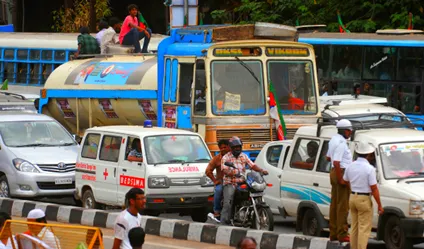
Figure 1: Let Ambulance Pass
- Tone down The Music & Remove Tainted Glasses: Many people nowadays wear headphones or play music loudly or roll up their window after switching on the air conditioner (AC), due to which they cannot hear the sound of the ambulance on time. Moreover, some people use tinted glass in their automobiles that do not allow light pass through it due to which a driver cannot see the blue & red flickering lights or the head-lights of an ambulance in the car side mirrors. Therefore people are suggested to be alert when they are driving, remove tinted glass covers, and listen to the music at a lower volume so that their neglect may not result in the death of a person. Someday it could be your life.
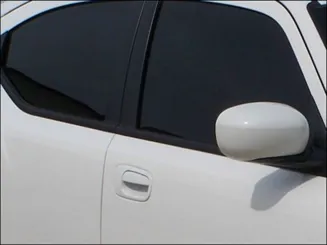
Figure 2: Tainted Glass & Closed Windows
- Stop Parking On Sides of Narrow Roads: Parking on the sides of narrow road results in heavy traffic jams. It narrows the lanes creating traffic jam which hinders the passage of ambulance even when other motorists try to co-operate. If the sides of a road are occupied by parked vehicles, motorists will have a tough time allowing safe passage to the ambulance. People are advised to not park cars on narrow streets. The police should take stern measures against the vehicles that narrow the lanes by parking on side of the road. Parking on the side of roads should be prohibited. Traffic police should make sure the free flow of traffic.
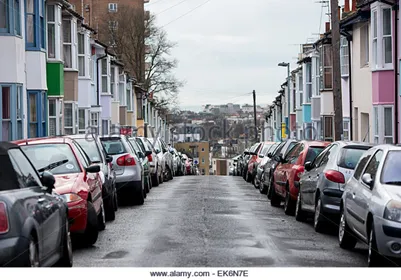
Figure 3: Parking In Narrow Roads Causes Traffic Jam
- Ensuring Strict Lane Discipline: Pakistanis as a nation severely lack the lane discipline while driving on the roads. The vehicle of different types, ranging from buses to motorcycles move on the lane they like, ignoring the lane designated for them. A vehicle in Pakistan once occupies the Fastlane never leave it until it is forced to abandon it. The rightmost lane is the fast lane for vehicle in Pakistan, but it is usually occupied by heavy trucks and buses. As these vehicles are heavy to maneuver so when an ambulance is stuck in the lane behind them, they take really long to move to another lane, resulting in loss of time. People are advised to use Fastlane only while overtaking or speeding up and abandon it as soon as an emergency vehicle like an ambulance or firefighter truck occupy it.

Figure 4: Lane Discipline Ensure Free Flow Of Traffic
- Traffic should be stopped: All the traffic should slow down, move to the left side and come to a halt until the ambulance passes. No one should drive into the path of the emergency vehicle or move their vehicle suddenly. People should not get panic and should not try to rush to the left side, instead they should move slowly and steadily making way for the ambulance so that no more accidents take places. Some people try to take advantage of the opportunity and overtake other vehicles or try to get behind the ambulance for a quick getaway from the traffic. People should avoid the temptation of haste and should report to the police in case some try to intercept ambulance path.

Figure 5: Move To the Left, Let the Ambulance Pass
- Cooperation with Traffic Police: The traffic police cannot do anything without the help of fellow motorists and pedestrian. Being a responsible citizen, it should be the responsibility of every citizen to cooperate with the traffic police and should follow all their instructions to take an ambulance can be provided a safe passage, in case it gets stuck in a traffic jam. People should just not follow the traffic rules, but also report those who don’t follow it.

Figure 6: Cooperation with Traffic Police Can Help Ambulance to Travel Hassle Free
No Exception for VIPS: Numerous people die every year in Pakistan, due to VIP vehicular movement. In order to provide an uninterrupted free passage, government law enforcing agencies block the traffic. The blockage results in heavy traffic jams that last for hours. Many patients die on the way to the hospital in the ambulances, as the ambulances are not equipped enough to sustain the condition of the dying patients. People should raise their voice and record their concerns to the ruling authorities that VIPs should not play with the life of people for their own comfort. No exception should be made for VIP vehicles regarding the rule of letting emergency vehicles like ambulance pass by.
Police Escort With Ambulances: Pakistanis usually don’t respect ambulances but they do respect Police-(due to fear). A traffic officer or a patrol should accompany an ambulance, to guarantee its quick passage until it reaches the hospital safely. In other more intricate emergencies, helicopters could also be involved in the process.
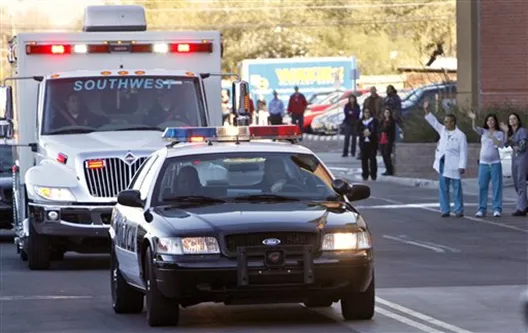
Figure 7: Police Escort Ensure Safety and Clear Way for Ambulances
- Effective Road Design: Road design can play a vital a part in providing a safe and quick passage for the emergency vehicles. Traffic improvements like Pre-emptive signals can provide green to approaching emergency vehicles, reducing potential system delay. Wider shoulder space, separate emergency lanes, could be used by approaching emergency vehicles for quicker delivery of patients.
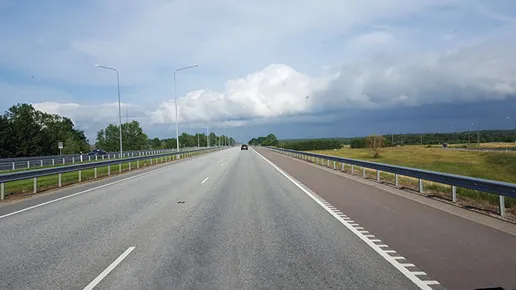
Figure 8: Effective Road Design
Emergency Response Times & Routes: Ambulance drivers are charged with the responsibility of circumnavigating their vehicles to emergency scenes by taking routes that will yield the shortest amount of travel time possible. This elapsed travel time, which begins when a unit is dispatched to an emergency and ends when they arrive on the scene, is commonly referred to as response time [4]. Unlike the general public, the ambulance drivers select streets that provide faster access to the hospitals with fewer impediments. This route is usually referred as “primary response route”. Recognizing the crucial importance of primary response, the Institute of Transportation Engineers (ITE) recommends that these routes should remain free of impediments. “Speed humps should not be installed on streets that are defined or used as primary or routine emergency vehicle access routes.” [5] The government should ensure that the primary route should remain open for ambulances and all the hindrances should be removed or not allowed on these routes.
Well Equipped Ambulances & Skilled Staff: Considering the current function of the ambulance and how it might be changed to provide treatment without travel, fully equipped and functional ambulances lead by well-trained experienced doctors and paramedics/nurses can save thousands of lives that are usually lost during traffic delays. All ambulances must be accompanied by trained doctors and lifesaving equipment should be available in every ambulance. Basic life support training should be included in the compulsory curriculum. Advanced life support training should be a must for all doctors and nurses.
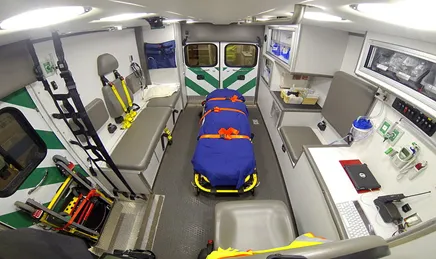
Figure 9: Fully Equipped Ambulances Can Provide Adequate Pre-Treatment
- The Role of Mass Media: Mass media campaigns can play an effective role in changing the inattentive conduct of people, especially when the campaigns deliver a humanitarian message such as: “giving way to ambulances can save lives”. These movements should be sporadically aired through diverse media channels for sustainability and should be complemented with other interventions that address the elements that are not related to behavior change. Thus media can play a vital role in creating awareness in public about basic lifesaving first aid techniques. Even a single maneuver like chest compression can save a dying person.

Figure 10: Mass Media Has Immense Reach To Wide Number Of Audiences.
- Eradicating Illiteracy: Pakistan is among the countries where the illiteracy or the lack of basic education is widespread. This causes serious social problems in Pakistani society as the people are unable to apprehend basic occurrences happening in their routine life. For instance, they lack the sense to how to behave when they are around an ambulance stuck in the traffic. They don’t realize the importance of that critical moment as they are not aware of what to do. So, the focus on education should be the topmost priority of our government to ensure that people are capable enough to deal with critical situations like ambulance being stuck in traffic.
Conclusion:
In conclusion, it is imperative to comprehend the healthcare need of the people of Pakistan, and in order to tackle it, both political, sociological, and strategic interventions should be implemented that should aim to improve the quality of healthcare and well-being of Pakistan’s population. Diverse tactics should be used like mass awareness campaigns, seminars, etc. to make general people aware of the crucial issues of our society. Furthermore, international organizations like International Committee of the Red Cross (ICRC) should arrange more such events like competitive essay writing to motivate the people of Pakistan, especially the youth, to come forward and present a rational solution for the prevailing problems in our society for the betterment of our fellow human beings.
References:
- Emergency Patient Transportation in South Asia-Call for a Proper Pre-Hospital Care System: Choudry, Mahwish, and Areeba .
- Bhatti JA, Waseem H, Razzak JA (2013) Availability and quality of prehospital care on Pakistani interurban roads. Annals of advances in automotive medicine 57: 257
- Emergency medical systems in low- and middle-income countries: recommendations for action.
Kobusingye OC, Hyder AA, Bishai D, Hicks ER, Mock C, Joshipura M
Bull World Health Organ. 2005 Aug; 83(8):626-31. - Ambulance use in Pakistan: an analysis of surveillance data from emergency departments in Pakistan
- Traffic Calming Programs and Emergency Response: A Competition of Two Public Goods .
